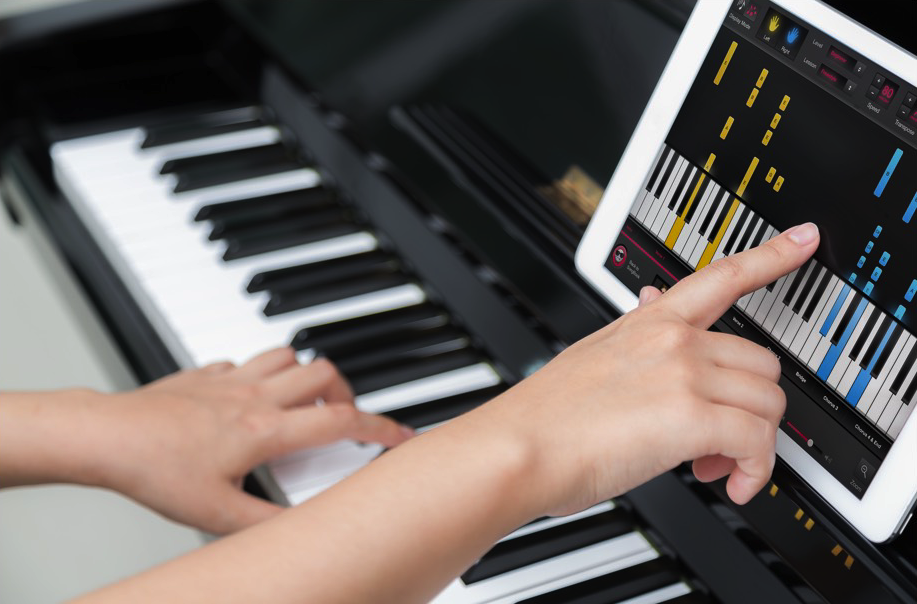Previously we discussed how to buy a used piano, and like many things in life, there often comes a time when we outgrow them. So take some time to shed away your tears. Hold a vigil if you must. But get excited for the encore, the showpiece event, the main act, now that you’ve properly warmed up. Yes, we’re talking about how to buy a brand new piano! Hey, you’re now well into your routine, you feel comfortable being called a pianist, but it seems like your old used piano is holding you back from realizing your full potential. You dream of being the next Mozart, and are determined to give it a crack. So, what do you say, “Out with the old, in with the new?!” Aye, aye captain!
It’s time to move out of the frat house, drive away into the sunset and into your own majestic pad which you call home. Lookout world – there’s a new maestro in town! But what will compliment your perfect decor? Add that razzamatazz to your abode? What else but a sparkling new piano. Imagine that intricate finished touch, the silky smooth polished exterior, the crispness of those ivory keys, that finely cut timber holding everything in place like a miniature Noah’s Ark, that sensual silhouete of black, that mellowy rich sound which soothes the soul, and the way it really ties the room together. Do we have your attention?
Before making arguably the most rewarding investment of your life, remember you only get what you pay for. You pay peanuts, you get monkeys. You pay your weigh in gold and you’re guaranteed to get the presidential suite. So yes, it does cost you an arm and a leg, figuratively speaking. A good quality upright grand piano can cost anywhere from $3,000, while a high quality grand piano can range anywhere from $15,000 to $30,000. But like any good treasure, search hard enough and you might get lucky and strike gold with a deal even OJ Simpson would be jealous of.
1. Grand Piano Or Upright Piano

In addition to your personal musical requirements, the size of the room where your upright or grand piano will stand is of crucial importance. Sound quality and volume are directly related to the size of the soundboard and the length of the strings. In other words, the larger the instrument is, the fuller its sound will be. If you have enough space and your budget allows it, you should choose a grand piano. Please be aware, however, that a top-class upright piano is always a better choice than an inferior grand. The saying, “Go big, or go home” exists for a reason.
The essential difference between an upright and a grand, apart from the external appearance and size, is the position of the soundboard. In a grand piano, the soundboard and strings are positioned horizontally, whereas in an upright piano, they are positioned vertically. Thus, in a grand piano the action works with gravity and is more responsive than in an upright piano. This is primarily why you see concert pianists perform on grand as opposed to upright pianos. Unless you yourself are at a concert level, either one should do, bearing in mind the reasons listed above.
2. Style And Finish

Pianos are produced in a variety of styles to accommodate different tastes and décor. From a traditional ebony or mahogany finish – in either polished or satin – to an exotic wood or limited edition custom piano, the piano you choose will make a striking statement and will introduce elegance and artistry to a room like no other piece can. Where else will you find an instrument, a work of art, a piece of furniture, and an entertainment magnet all in one.
3. Sound

Several factors play into the sound of a given piano, including size, quality of components and overall construction. Sound quality and volume are directly related to the size of the soundboard and the length of the strings. A larger soundboard will create a larger volume of sound and longer strings will result in greatly enhanced tone – particularly in the bass section.
In addition, every piano has its own distinct “voice,” which is determined by the age of the piano, the condition of the hammers and how the piano has been prepared or maintained. Temperature and humidity will affect the sound of a piano, and the acoustics and furnishings of a room will also factor into the sound that the piano produces. For example, plush carpets, draperies and upholstered furniture will tend to absorb sound, making the piano sound softer. Wood and tile floors tend to produce a brighter, more vibrant resonance. The question is, “Do you fit your piano around your home, or do you fit your home around your piano?” Take that Shakespeare.
4. Sensitivity And Touch

The touch of the piano is another measure of personal taste. Some players like a light action, while others prefer to feel more resistance when they press the keys. Be sure to play a variety of pianos and notice how the action of the piano keys feels when you play. Are the keys lively and responsive or stiff and sluggish? A more responsive piano will allow for greater ease of playing and tonal expression. Remember, a qualified technician can often adjust the action to accommodate varying tastes. “Can’t touch this?” Yes you can!
5. Quality Of Construction

Two pianos may look very similar but vary widely in price. Top quality manufacturers pride themselves on the quality of their craftsmanship and focus on the sourcing of their materials, knowing that the best materials will produce the best pianos. For instance, you’ll want to look for a soundboard made from long-grain spruce as opposed to a laminated material.
A piano should be equally attractive inside and out, even to the layperson’s eye. The finish should be free from nicks and marks and should be even in appearance. The grains in the soundboard and veneer should be aligned both for aesthetic value and tonal quality. The plate should be polished and attractive, and every moving part should repeat its movement with ease and accuracy. The lid, music desk and fallboard should move without undo exertion. In short, the piano should look like a magnificent piece of furniture and should respond like a precision instrument. A piano is like the Mona Lisa of instruments. So make sure it’s somewhere it can be appreciated – not only to play but to look at also.

We hope these tips will help you in your quest to find the best piano for you. It’s not easy going from amateur to virtuoso so remember buying a brand new piano is merely a step towards those bright lights. A journey to reach your promised land of keys and harmonies. No more Bach to basics, because you’re Debussy becoming the next Beethoven, we’re Shubert about it. So, get Chopin and start looking. The piano of your most wanted Liszt, is only an Arrau away.
Source: 1
















2 comments
[…] previously discussed how to buy a used piano and how to buy a new piano, but for many of us, the practicality of owning a real piano seems but a luxury, or is something […]
When someone is introduced to the piano, they will love it instantly because of the beauty of the sound of this instrument even though they can not play it. Piano is able to introduce musicians from the very beginning. The beauty of the instrument is that the piano is the most easily learned instrument for beginners but also the tool that takes the longest time to really master. When you buy used pianos check it out to choose good quality and it takes good knowledge to check the condition of the piano both in terms of age, history, piano origin, mechanical quality, sound quality, etc. so you better buy a new piano, if you do not want to risk the quality of the used piano it’s better you buy a new piano.